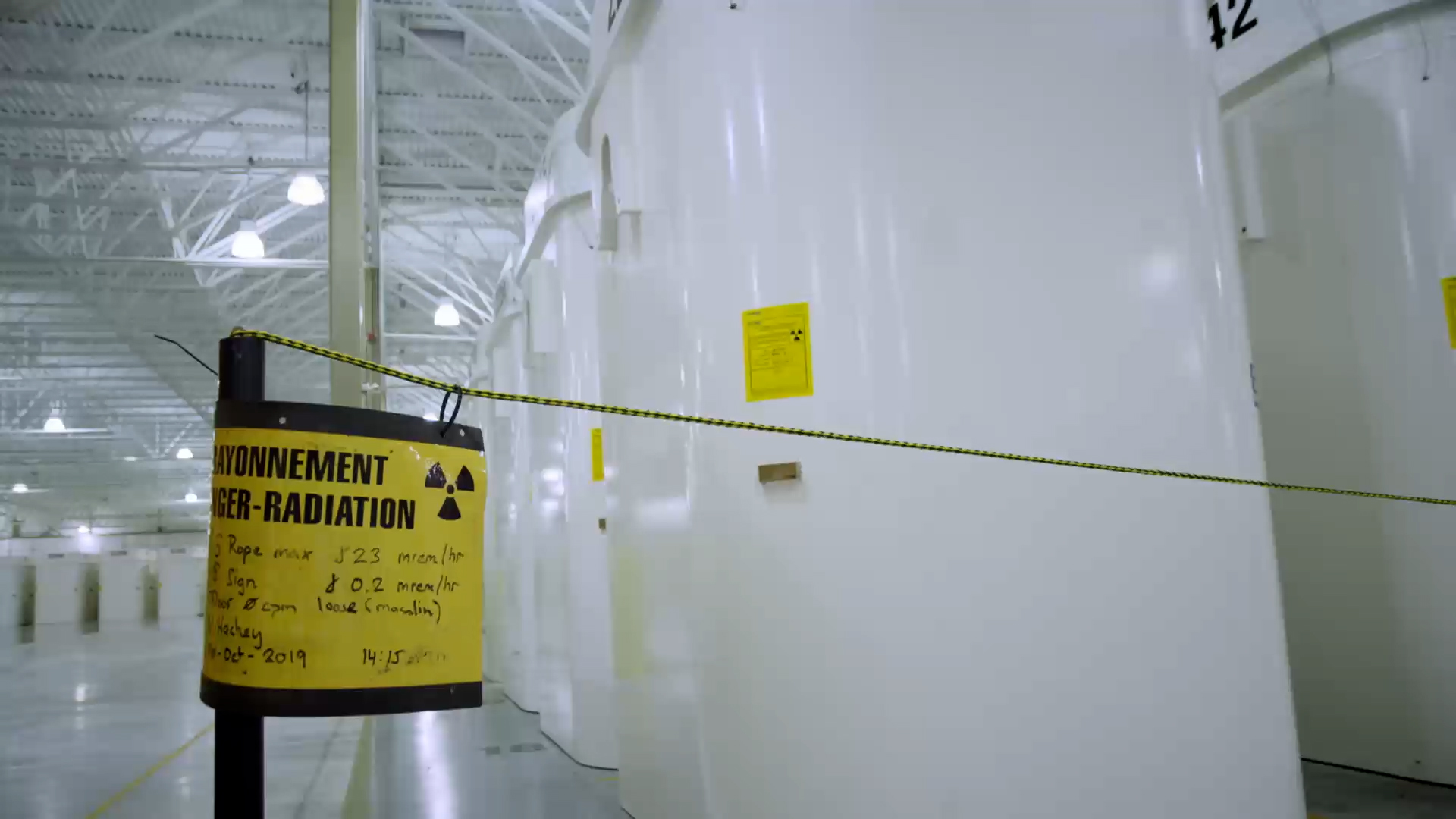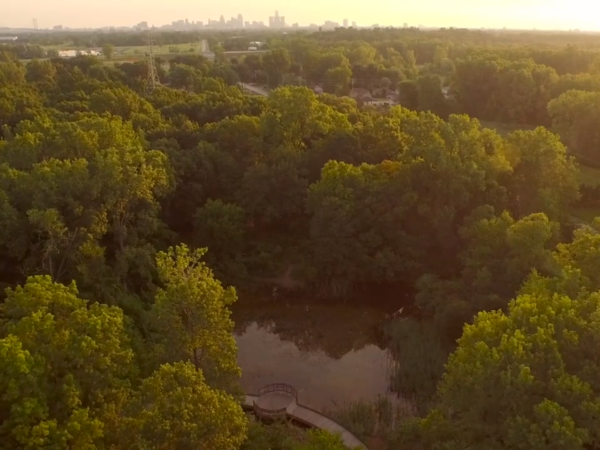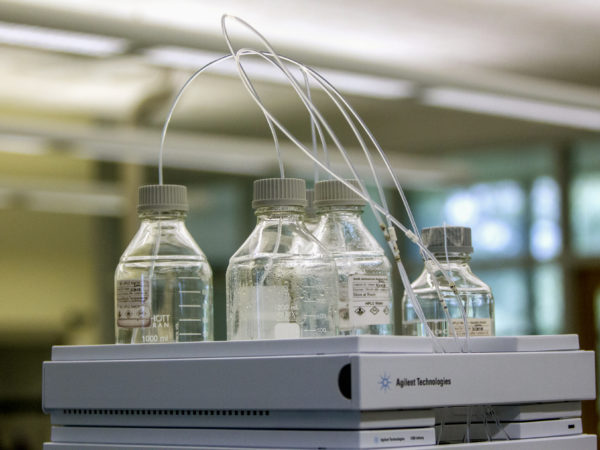
Canada’s plan to store spent nuclear fuel 1,600 feet below ground in the Great Lakes basin, some 30 miles from Lake Huron, is continuing to ruffle feathers throughout the Great Lakes states.
Earlier this month, U.S. lawmakers called out the Canadian plan for failing to prioritize the health of the Great Lakes and the 40 million residents who depend on it for clean drinking water ahead of its own energy needs.
Michigan Democratic Rep. Dan Kildee is leading a 20-member bipartisan group calling on President Joe Biden to pressure Canadian Prime Minister Justin Trudeau to halt the plans for storing an anticipated 57,000 tons of high-level radioactive material within the basin.
Michigan Gov. Gretchen Whitmer, in a statement on the ongoing legal battle over the future of Enbridge’s Line 5 pipeline, accused the Canadian federal government of “adding even more risk to our waters” by allowing plans to store radioactive nuclear waste in a 1,400-acre underground warehouse to proceed.
Yet despite concerns within the basin from politicians and environmental groups, and unrest among local farmers worried about water contamination and potentially tanking property values, the project is moving ahead as planned. Geologic testing at one location in southern Ontario began this spring.
Even so, determining the long-term fate of Canada’s spent nuclear fuel remains far from settled as rifts develop within the host community, and between Canada and frustrated U.S. lawmakers.
“There’s a divide taking place,” Canadian Member of Parliament Brian Masse noted on a recent tour of the proposed South Bruce site with concerned residents. “I do believe there needs to be some responsibility taken on a federal level to make sure our communities aren’t broken in this process.”
The need for long-term spent-fuel storage
Current plans to find a permanent home for Canada’s spent nuclear fuel have been overseen by the not-for-profit Nuclear Waste Management Organization since 2007. Founded and funded by Canadian nuclear power operators, NWMO has been tasked by the federal government with designing and implementing a long-term storage solution for used nuclear fuel rods.
To date, spent nuclear fuel or other material made radioactive by generating nuclear power has been stored on-site at five facilities throughout Ontario and Quebec. This includes two nuclear power plants on the shores of Lake Ontario (Pickering and Darlington, just east of Toronto) and one on the Lake Huron shoreline (Bruce, west of Tiverton).
But the existing storage plan has a relatively short shelf life, spurring the federal government in 2002 to create the NWMO and begin searching for long-term (think 100,000 years) solutions.
When spent nuclear fuel bundles are removed from a reactor they are currently interred in a water-filled pool for up to seven years until radioactivity decreases. From there the rods are relocated to dry storage containers made of 20-inch-thick, high-density concrete lined with steel half an inch thick. These storage facilities have a lifespan of roughly 50 years, and Canada has been generating nuclear power since the early 1960s. While the dry storage silos can be refurbished to extend their use, it does nothing to address the long-term need for safe storage solutions.
Experts at NWMO settled on a deep geological repository, or DGR, as the preferred storage option in 2007 after three years of discussion with European nuclear engineers.
The basic premise of the DGR is deceptively simple: bury the spent fuel. If NWMO could identify a willing host community that is situated in an area with suitable geology, the stage would be set to spend $23 billion over 40 years to construct a massive underground labyrinth of tunnels bored into rock that, in total, would be capable of storing the 57,000 tons of spent fuel that Canada currently has in cement-encased copper canisters. The aboveground footprint of buildings would be little more than a mile across.
But the question remains: Where should three million bundles of spent nuclear fuel be stored for what is, essentially, the rest of time?
Identifying a willing host community
The process for identifying a willing host community began in 2008.
From an initial pool of 22 potential locations across Canada, on-site investigations quickly whittled that list down to two, both of which are in Ontario: South Bruce, at a location some 30 miles from Lake Huron, and Ignace in northwestern Ontario. (The Ignace location, northwest of Lake Superior, is not within the Great Lakes basin; rather, it sits within the Winnipeg River basin. Borehole drilling to determine the suitability of the bedrock beneath the proposed site began in Ignace in 2017.)
Supporters of the DGR say the 10-year construction project and ongoing operation of the facility are expected to create 3,000 direct and indirect jobs for the recipient’s economy. Councils and mayors from throughout South Bruce have been split between supporting the DGR plan outright and awaiting the results of geologic testing and community engagement before approving or rejecting the plan. Others have been more bullish.
“Just leaving [nuclear waste] where it is, is not right,” Huron-Kinloss mayor Mitch Twolan said late last year. “The solution is DGRs.”
U.S. lawmakers aren’t the only ones concerned about the proposed DGR. Public opposition to the proposal among South Bruce residents has been mounting steadily. After one poll appeared showing nearly 70% of surveyed residents in South Bruce ‘strongly’ or ‘somewhat’ supported the DGR, an opposition group commissioned its own poll and found that 64% opposed the proposal. This comes as almost 16,000 people throughout the province and 1,500 people in South Bruce alone have signed petitions calling for the DGR project to be halted immediately because of long-term water and soil quality worries, in addition to traffic and health concerns.
That same poll asked residents if they supported holding a local referendum on the DGR — more than three-quarters of those polled did. South Bruce Mayor Bob Buckles supports the referendum idea in theory, though he believes it would be better held closer to the final site selection date, expected in 2023.
The NWMO hopes to select a permanent site for the DGR by 2023, which would ultimately trigger a federal environmental assessment of the plan. A License to Prepare Site application would also need to be submitted and approved by the Canadian Nuclear Safety Commission, a process that won’t see design and construction of the proposed DGR begin until 2033 — if the license is granted.
While borehole drilling in South Bruce continues alongside bitter debate among residents, so-called ‘goodwill’ money from NWMO has poured into South Bruce for the past decade. To date, 3.2 million Canadian dollars has found its way into shrinking rural communities within South Bruce, paying for everything from municipal salaries and well upgrades to special firefighting equipment for local first responders.
Mayor Buckles maintains the community is not relying on NWMO largesse to bankroll the municipality, but others believe the NWMO is taking advantage of the poor financial situation that South Bruce finds itself in in order to secure community support for the DGR.
Even detractors of the DGR project note the money has benefited the community in significant ways. Bill Noll, vice-president of DGR opposition group Protecting Our Waterways, told CBC News the millions from NWMO is not tied to the DGR proposal.
“It is completely divorced,” he said. But “why would you spend one and a half million dollars on a community if you didn’t expect something back in return?”
Catch more news on Great Lakes Now:
Animal Check: New project to monitor aquatic species that live near proposed nuclear storage sites
COP26 Coverage: What do you want to know about the U.N. climate change conference?
Featured image: Bruce Nuclear Generating Station in Ontario provides approximately 30 percent of the province’s electricity. The dry storage containers at the station are made of thick concrete and steel to safely house used fuel rods. The facility is licensed to have up to 2,000 containers on site. (Photo Credit: Open Door Co./Nomad Films Inc.
4 Comments
-
A deep geological repository for spent fuel rods
from nuclear plants does not pose any risk to the
Great Lakes, and Rep. Kildee’s fear-based campaign
has no environmental protection and public health
legitimacy. -
Storing moving nuclear waste in the Great Lakes watershed area is insane . Actually using the Great Lakes to provide cooling water for nuclear reactors is an accident waiting to happen . Also all of the worlds reactors leak to some degree period and is downplayed . The Pacific is still getting a daily dose from the melted reactors and fuel rods including spent mox fuel on going 10 + years . The corium from the melt downs is sill burning and creating radioactive isotopes but can’t be retrieved with today’s technology . Robots sent down to find the molten corium get destroyed in very short time from the intense radiation . A safer location would be a dry environment like a desert that is in a low earth quake zone not near Lake water and remember Lake Huron is upstream of lake Erie and Ontario .Consider this there is no such thing as an experts beware
-
I could not find what DGR stands for in the article. What is it please?
-
It’s mentioned in the second section! Deep geological repository. – GLN News Director
-




